bitternut hickory (Carya cordiformis)
Juglandaceae, the walnut family
How to recognize bitternut hickory. Bitternut hickory has 7-11 leaflets, bud scales that are leaflike and valvate (meeting at the edges rather than overlapping), bark that doesn’t exfoliate, and thin-husked fruits.
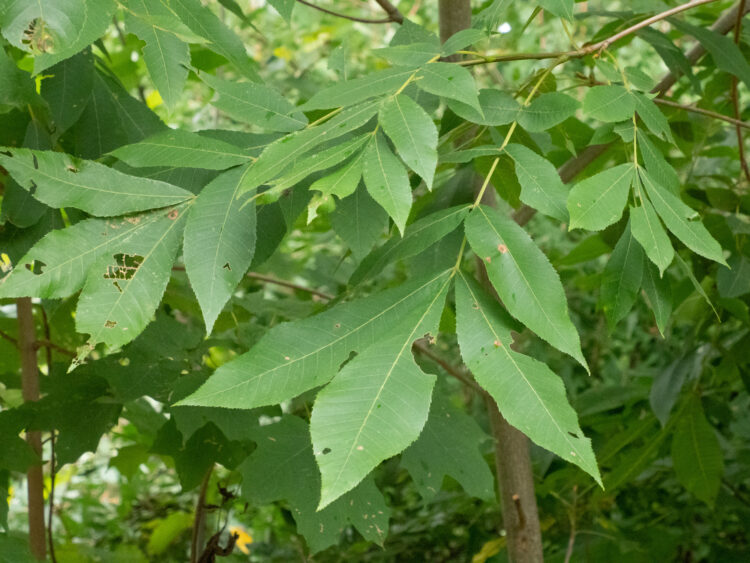
Bitternut hickory has slender branches and narrowly proportioned leaves compared to other hickories.
The bark of young trees is smooth and light gray. Older trees (shown below) are shallowly grooved with thin, flat, interconnecting ridges.
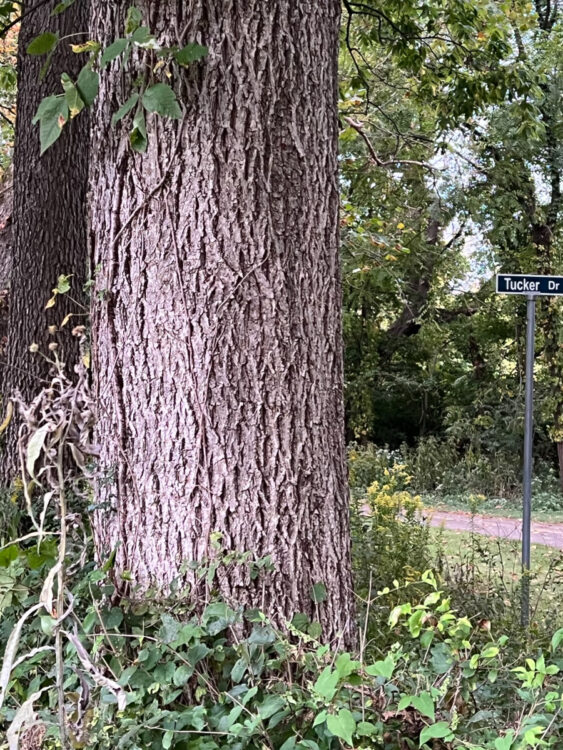
Bitternut hickory along an Olentangy River bike trail.
Flowers and fruits. The trees are monoecious (unisexual flowers, both sexes borne on the same trees). The males are presented in branched catkins. The fruits are smooth one-seeded nuts that split open along 4 sutures.
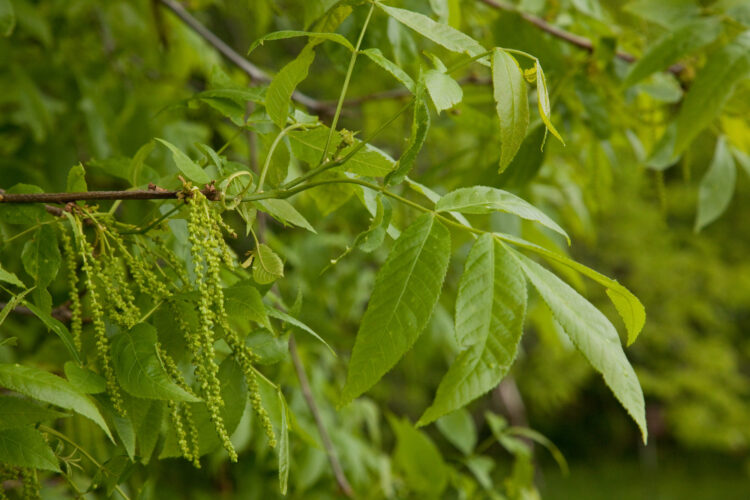
Bitternut hickory in flower.
May 12, 2010, Marion County, Ohio.
Below see closeups of the flowers.
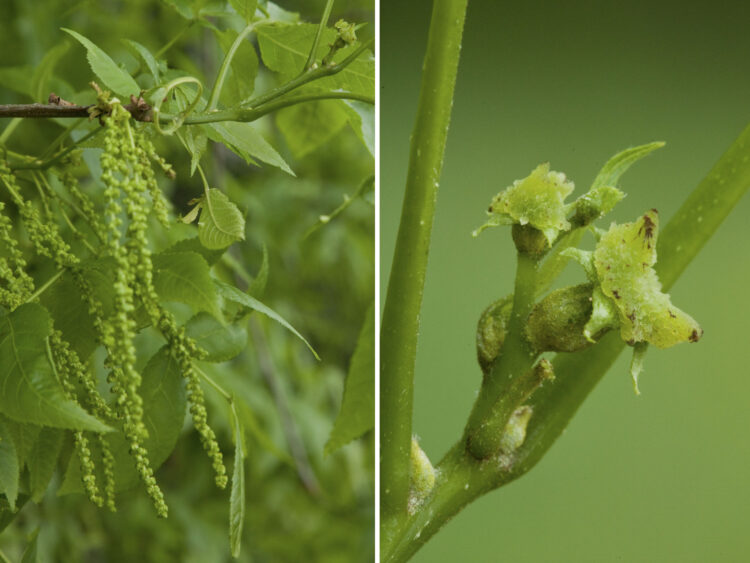
Bitternut hickory flowers.
Left: male catkins (note female flowers in upper right corner).
Right: females in few-flowered clusters.
Bitternut hickory fruits are about 1 inch wide, 4-ribbed, and thin-hulled.
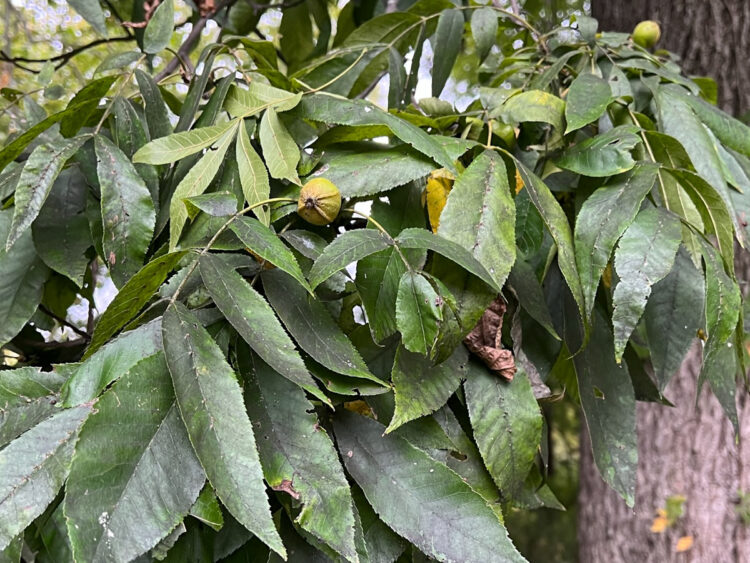
Bitternut hickory fruits are thin-husked.
September 26, 2023, in Franklin County, Ohio.
In the winter. Bitternut hickory twigs seem to have been touched by Midas!
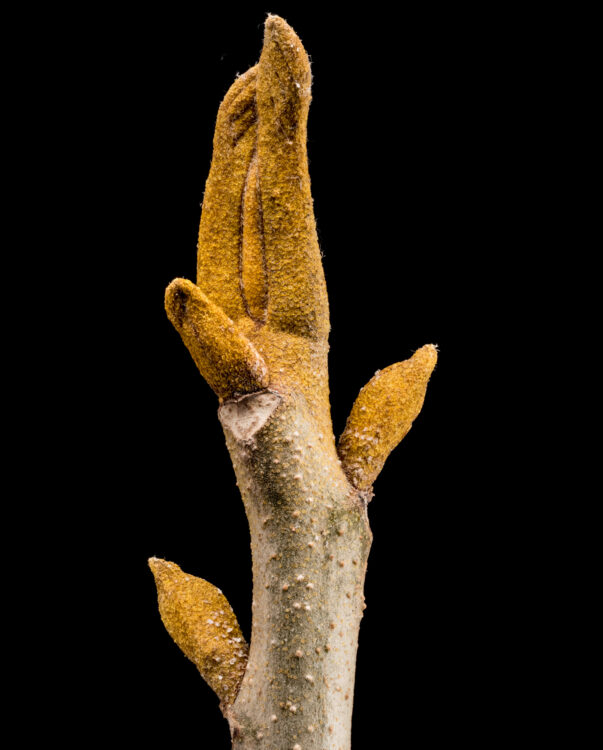
Bitternut hickory has a true terminal bud that appears naked,
and the scales are “valvate” i.e., paired and meeting at the edges.
Also, oooh…there is the golden color.
Where to find bitternut hickory. E. Lucy Braun, in The Woody Plants of Ohio (1961, 1989; The Ohio State University Press) tells us it “has a wider range than any other hickory, extending farther north and slightly farther west. It is a tree of mesic situations, and general in Ohio. It is easily recognized from midsummer until growth starts in the spring by the valvate yellow-scurfy terminal bud”
Scanned Image from an Old Book
(Flora of West Virginia, by P.D. Strausbaugh and Earl L. Core)
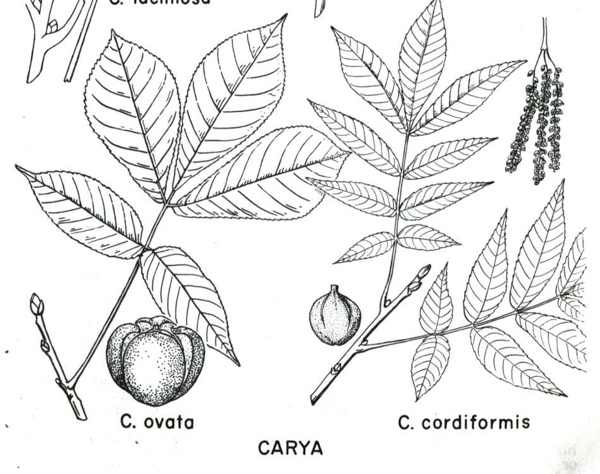
Bitternut hickory is on the right.
Ooh, ooh, I have a question!
Bitternut hickory is a member of the Juglandaceae (walnut family). It contains walnuts (genus Juglans) and hickories (genus Carya). Both genera have alternate pinnately compound leaves; those of walnuts have a great many leaflets (15-23 leaflets) while hickories usually have only 5-11leaflets. Walnuts have chambered pith; hickory pith is continuous-homogenous.
Hickories are divided into two groups: the pecan hickories (section Apocarya) and the true hickories (section Carya):
True hickories such as shagbark hickory and pignut hickory have mostly 5–7 leaflets, and a large egg-shaped terminal bud with overlapping scales.
Pecan hickories such as bitternut hickory and pecan (the latter not quite native in Ohio, but found only a bit farther west) have more than 7 leaflets, and the terminal bud is elongated and flattened with scales that meet edgewise.
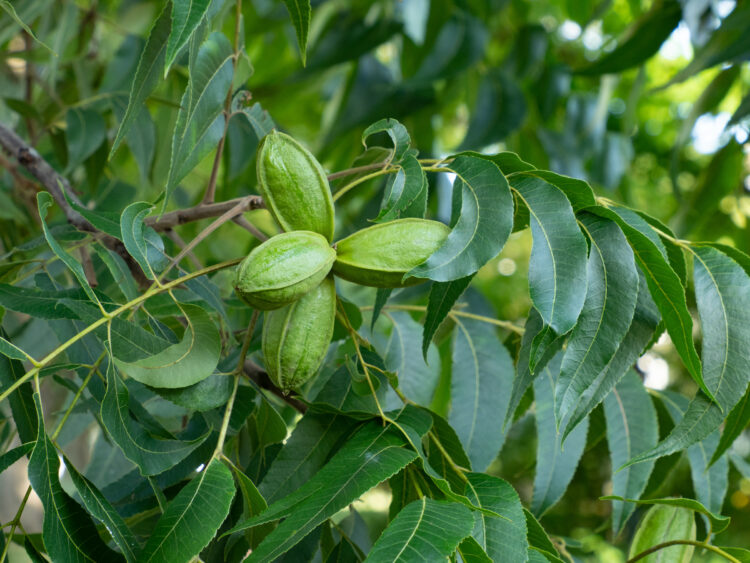
Pecan (Carya illinoinensis) on a Columbus street in August 2023.
